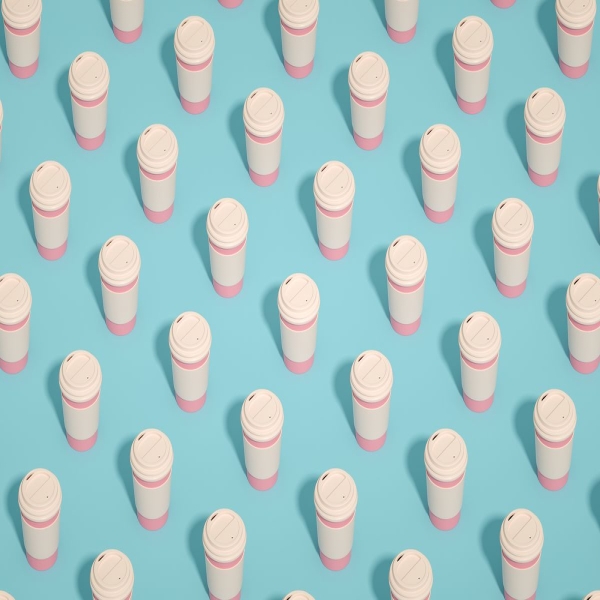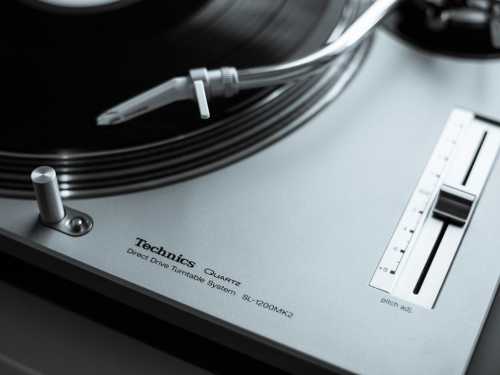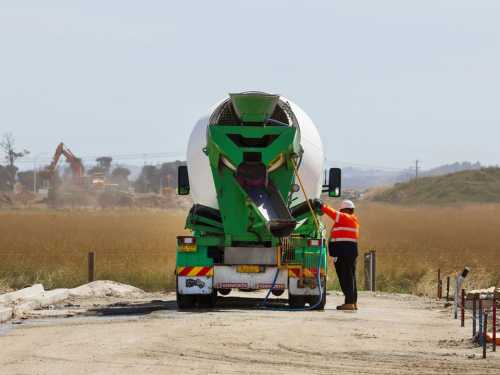Your expensive coffee habit is indeed getting even more expensive.

Emily Stewart covers business and economics for Vox and writes the newsletter The Big Squeeze, examining the ways ordinary people are being squeezed under capitalism. Before joining Vox, she worked for TheStreet.
That Pumpkin Spice Latte is going to cost you a pretty penny this fall.
If you are a connoisseur of fancy coffee and fancy coffee shops (or even just fancy-ish), you’ve probably noticed that the price of your favorite drink is higher than it used to be. Nowadays, the base price for a regular latte is something like $6, then maybe you add in vanilla syrup, which costs you an extra dollar, and ask for oat milk, which is a dollar more. You’re now staring at an $8 drink, plus taxes and, assuming you’re doing the right thing here, at least a $1 tip.
What, you might be asking yourself, is going on here? You are not alone. Why is my latte so expensive? is indeed a perennial question. And to that question, at least the 2023 version, I’ve got answers.
(I’m going to insert a semi-long aside here, which is that obviously you can make your coffee at home or go somewhere less expensive, like McDonald’s or Dunkin’ or a coffee cart, which all run under $4 for a latte. You can also get just regular black coffee, or add in just regular milk, and it’ll run you a whole lot cheaper. Your latte, your choice.)
Anyway, back to why lattes are expensive. I spoke to a Starbucks analyst and three people in the coffee business to get some explanations.
The cost of your latte is more than the coffee and the milk
The long and short of why your latte is more expensive is that almost everything is more expensive than it was a few years ago. That, of course, includes many of the inputs that make your latte price your latte price — from the coffee and milk to the wage of the worker drawing that cute little flower onto the top of the drink. Coffee is a commodity, so its price goes up and down — its price has actually come down from its 2022 highs. You also maybe notice the rising latte price more because it’s something you buy relatively often, and it’s the only thing on the receipt when you do.
Caleb Benoit, founder and CEO of Connect Roasters, a wholesale coffee company that’s about to open its first cafe in Bourbonnais, Illinois, laid out some rough numbers on coffee shop economics. Judging only by the coffee, milk, and lid, the margins for a coffee shop on a latte look great, like 70 to 80 percent. But that’s without the overhead. “I think most healthy coffee shops are probably paying 30 percent of their revenue out in labor and probably another 10 percent in fixed costs, like rent and utilities,” he said. “You factor all of that into the equation and your, let’s just call it 75 percent gross margin, becomes 10 to 15 percent net margin.”
Patrick Sullivan, who owns The Coffee House with his wife in downtown Burlington, Wisconsin, says he was “terrified” when they decided to hike their prices earlier this year. But they felt like they had no choice. They partner with Anodyne Coffee Roasting out of Milwaukee for their beans, which he credits for holding the line on pricing for a long time. Eventually, Anodyne — and other suppliers — gave in and hiked costs. “It was death, from a pricing perspective, by a thousand cuts,” he said. “Anodyne’s got to raise their bean cost 10 percent, our alternative milks went up 15 percent, so almond, oat, coconut.” Their supplier for regular milk upped prices, too, so Sullivan started going to the local Pick ’n Save, where it was cheaper, three times a week. Eventually, though, they had to start charging more.
“We basically made the decision in the spring of this year that we were going to do this in one fell swoop, and that way we know why we’re doing it, our employees know our reasoning and the numbers, and we just talk to our customers about it if they’re concerned,” Sullivan said. “The numbers had to be a 15 to 17 percent increase in price, that was just to maintain the profit margin that we have always needed, not to become more profitable.”
Danny McColgan, one of the owners of Familiars Coffee & Tea in Northampton, Massachusetts, said that over the past couple of years, it seemed like they were getting a letter from some vendor every month explaining a new price increase. “Even thinking back to when everyone was up in arms about how high the price of gas was getting, that was something where our vendors added fuel surcharges, and those fuel charges haven’t gone away,” he said.
Familiars, which opened in 2019, already had a higher price point. They work with a sustainability-focused coffee roaster that uses a direct trade model with farmers, and they get their milk from a local dairy farm that’s extra nice to its cows. “We’re paying a fair price for the coffee we’re using; we’re paying a fair price for the milk we’re using. And honestly, it’s not just paying a fair price, it’s paying a good price,” McColgan said. “It’s all about what people consider a commodity and what people consider a luxury. I think that in 2023, getting a vanilla oat milk latte is okay to be considered a luxury item. You can get a cup of black coffee for less.”
Baristas are making better money, and that money has to come from somewhere
Labor is often the most expensive cost coffee businesses have, and labor has gotten costlier over the past few years. Workers are demanding and making more money, and lower-wage workers — like baristas — have seen especially significant wage gains. That’s a good thing! It also means higher costs for companies, and — you guessed it — for you.
Starbucks has pointed to inflation and higher labor costs as the reason for its increased prices. (It’s also been able to make more money off of those higher prices.)
“There’s been a big push for them to have a better dynamic with their employees. So, they started a reinvention plan to kind of put an end to the unionization of employees, but it comes at a cost. So they’ve raised prices in that regard to raise wages,” said Siye Desta, an equity analyst at CFRA Research, a financial intelligence firm, referring to efforts among Starbucks employees to unionize stores. Starbucks’ reinvention plan also entails revamping some of its stores, it says, to improve the day-to-day of its workers and make things speedier and more efficient, which requires investment.
Starbucks has expanded digital tipping, which isn’t rolled up into the price of its drinks but obviously shows up for consumers at the point of sale. It has helped the company keep employees. “[It] might rub customers the wrong way, but it’s definitely helped with wages, and their barista attrition has improved quite a bit since they’ve made those changes,” Desta said.
There is quite a discourse around tipping right now, with many consumers feeling angered and pressured at point-of-sale tablets that nudge them to add on a tip for their barista or server. I will only say that you may want to keep in mind that your barista is making the cost of, like, two of your lattes an hour. Tip jars have always existed, they were just easier for consumers to ignore. Also, you can just tap “no tip.”
Smaller coffee shops are feeling wage pressure, too. Many states have laws in place that are gradually increasing the minimum wage, including Florida, Illinois, and Massachusetts. Many businesses have had to increase pay to compete for workers in the current labor market.
Sullivan, the Wisconsin coffee shop owner, said most job applicants he gets nowadays list their current wage as somewhere in the $15 range. “For the volume of business we do, it requires a lot of staff to provide good service, so that’s the balancing act,” he said. His shop has changed around some of its food offerings to try to diversify and up ticket sizes to mitigate some of the higher labor costs.
If you love frilly coffee, you might have to learn to love (or accept) the frilly price
The price of lattes has always been steep, even before this recent bout of high inflation. The same goes for cold brew coffee, which is pricier to make because it takes more coffee, more time, and different machinery. If you think your drink of choice is too expensive now, you probably thought it was expensive five years ago. The latte-sipping liberal meme exists for a reason, whether or not it’s fair.
The price of lattes probably isn’t going to go down anytime soon. As much as customers have been annoyed by the price hikes, they’ve kept buying and ordering fancier drinks. Plenty of big companies, including Starbucks, have been quite forthcoming about consumers continuing to open up their wallets to higher degrees. The small coffee shop owners I spoke with said that by and large their customers seemed to get what was going on with the pricing, though they did sometimes get complaints. Plus, if the big guys like Starbucks charge more, so can they.
Benoit, the Illinois coffee company owner, said he often argues that coffee is underpriced, given the length of its supply chain and the number of hands the product touches before the consumer has their first sip. “You can compare it to other things in the beverage industry. You look at wine, right?” he said. “It’s grown in far-away places, the manufacturing of the product is pretty intensive. Nobody blushes at a $10, $15 glass of wine at a restaurant, but somebody might see a $5 latte as expensive.” It’s not not a fair point, though $15 for a glass of wine is also wild.
If there’s a silver lining here for coffee lovers, it’s that prices are probably going to chill for a while now. “I think it’s more likely now than it was before for there to be some signs of consumers trading down with the orders and making less custom drinks that are expensive, which might change [Starbucks’s] pricing strategy,” Desta said. “They’ve already indicated they don’t plan on taking much compared to quarters past, and that’s just kind of industry-wide.”
The other silver lining is that, really, you do have other options — you can go somewhere cheaper, you can make your coffee at home. Or you can keep at it with the lattes, which are delicious, and if you’re going to local coffee shops, supporting small businesses. It’s just going to cost you a little more than you’d like.
Source: vox.com






